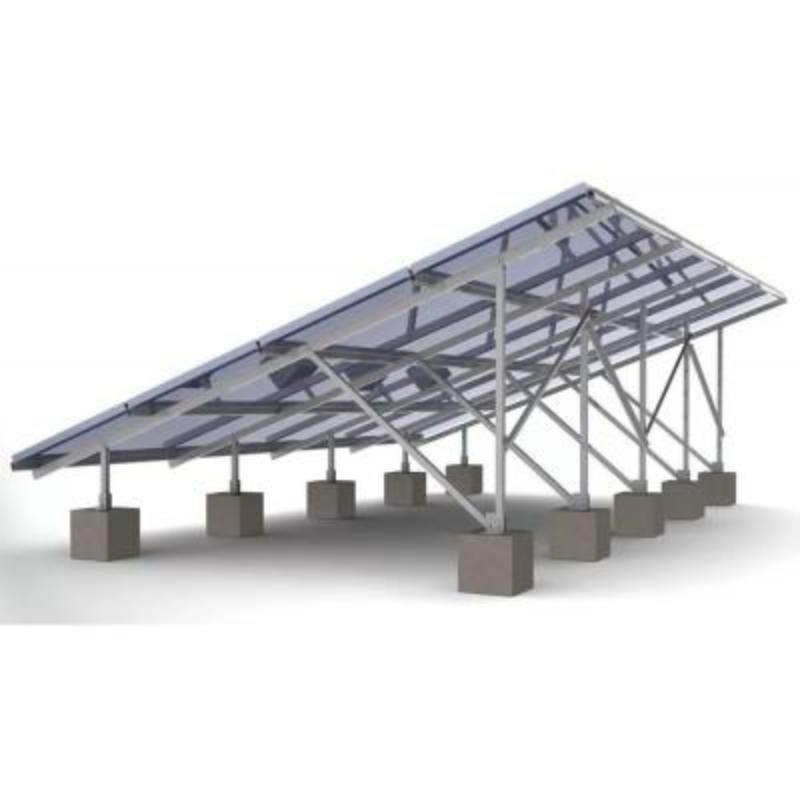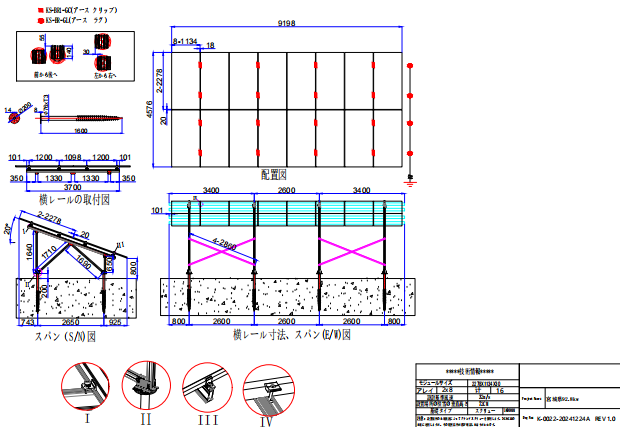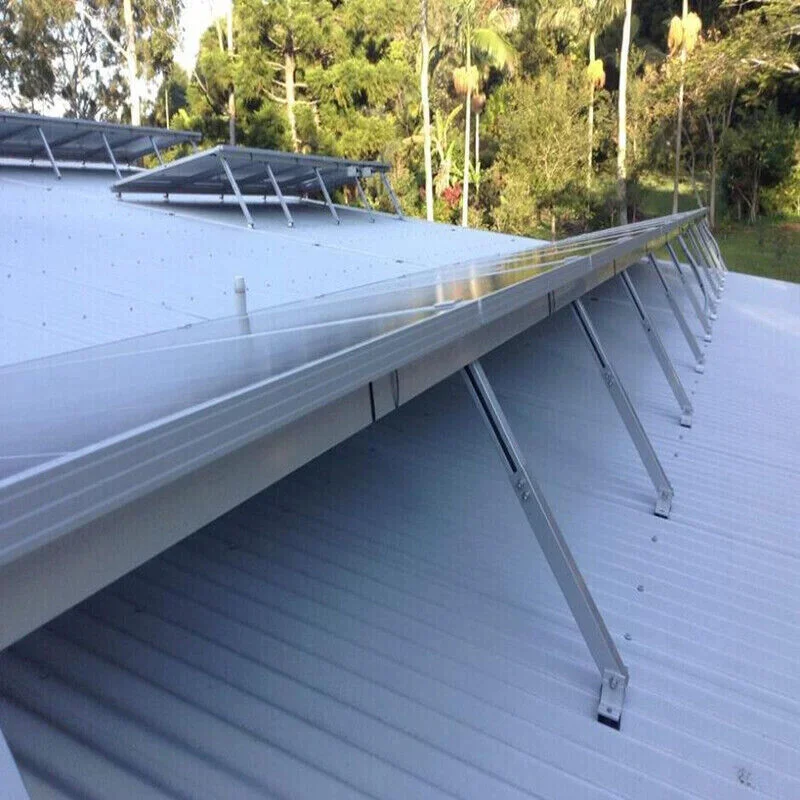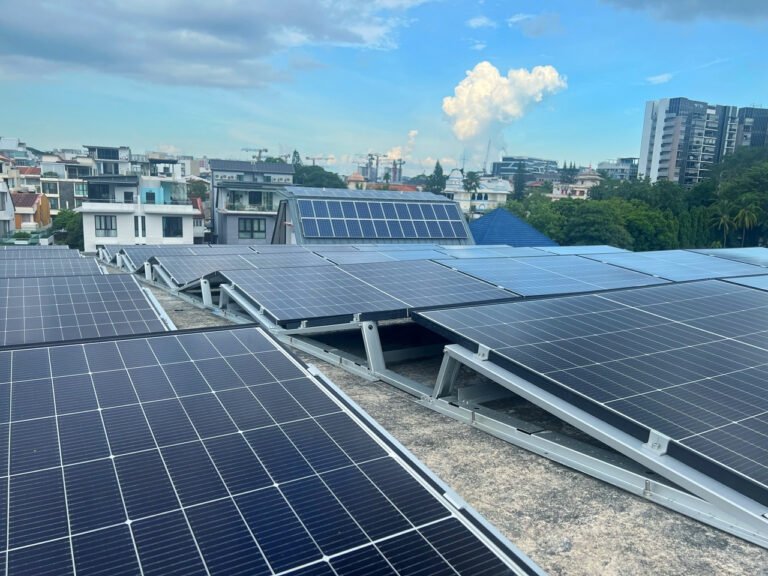-
2103 Room NO.322 Xinggang One Road,Haicang District,Xiamen Fujian,China

Solar PV Mounting Structures: A Comprehensive Guide to Design, Materials, and Selection
Solar Photovoltaic (PV) mounting structures, often referred to as PV racking or solar brackets, are essential support systems used to position, install, and secure PV modules within a solar power generation system. The design and material selection for these structures are diverse, tailored to meet varying requirements and specific application scenarios.
Table of Contents
Fundamental Design Principles and Technical Requirements
The foundational design of PV mounting structures necessitates careful consideration of several key factors:
- Load Capacity Verification: This includes calculations for vertical load-bearing capacity (both compression and uplift/pull-out resistance).
- Foundation Stability: For ground-mounted systems, horizontal load capacity verification for pile foundations and overall structural stability analysis are crucial.
These requirements highlight that PV mounting structure design must ensure not only the stability of the structure itself but also its ability to withstand loads transferred from the ground or from above (like wind and snow).
Common Materials for Solar PV Mounting Structures
The current market offers several common materials for PV mounting structures:
- Aluminum Alloy: Typically Al6005-T5 with an anodized surface finish.
- Stainless Steel: Often grade 304.
- Galvanized Steel: Usually Q235 steel with a hot-dip galvanized coating.
- Concrete: Primarily used for large-scale utility PV power plants, often as ballast or foundations.
- Basalt Fiber Composites: An emerging material gaining attention.
Material Comparison: Advantages and Disadvantages
Choosing the right material involves weighing the pros and cons based on project needs:
- Aluminum Alloy:
- Pros: Lightweight, excellent corrosion resistance (especially when anodized), aesthetically pleasing, durable, easy and fast to install. Widely used for residential rooftop solar applications.
- Cons: Relatively lower load-bearing capacity compared to steel, potentially limiting its use in high-wind areas or for large spans. Higher initial cost than galvanized steel.

- Stainless Steel:
- Pros: Excellent corrosion resistance (superior in harsh environments like coastal areas or industrial zones), high strength, visually appealing, high recyclable value.
- Cons: Highest material cost, which can significantly impact project budgets.
- Galvanized Steel:
- Pros: High strength, excellent load-bearing capacity, lower cost compared to aluminum and stainless steel, strong corrosion resistance provided by the zinc coating (hot-dip galvanizing offers long service life, often 25+ years). Widely applicable.
- Cons: Heavier than aluminum, potentially increasing transportation and installation labor costs. Corrosion resistance depends heavily on the quality and thickness of the galvanizing layer; potential for rust if the coating is damaged. Service life might be shorter than stainless steel in extremely corrosive environments.
- Basalt Fiber Composite:
- Pros: Excellent mechanical properties (high strength-to-weight ratio), outstanding corrosion resistance, non-conductive, low density (lightweight), long service life, potentially lower life-cycle cost. Good weather resistance against sun, temperature fluctuations, wind, and rain. Design flexibility, suitable for various applications, including sloped roofs.
- Cons: Relatively lower stiffness compared to steel (requires careful structural design to compensate). Newer material, so long-term field data might be less extensive than traditional materials. Specific installation precautions needed (e.g., avoiding damage during installation, considering structural interactions).
here is a comparison table summarizing the advantages and disadvantages of different materials used for solar PV mounting structures, based on the provided text and general industry knowledge.
Material Comparison for Solar PV Mounting Structures
| Fonctionnalité | Aluminum Alloy (e.g., Al6005-T5 Anodized) | Stainless Steel (e.g., 304) | Galvanized Steel (e.g., Q235 Hot-Dip) | Basalt Fiber Composite |
|---|---|---|---|---|
| Corrosion Resistance | Excellent (esp. anodized) | Superior / Excellent | Good to Very Good (depends on coating) | Excellent (non-metallic) |
| Strength | Moderate / Good | High | Very High | High Strength-to-Weight Ratio (Lower Stiffness*) |
| Weight | Lightweight | Heavy | Heavy | Very Lightweight |
| Initial Cost | Moderate to High | Highest | Lowest | Variable (Potentially competitive, lower life-cycle cost claimed) |
| Installation | Easy / Fast | Moderate | More Labor-Intensive (due to weight) | Potentially Easy (lightweight) but may need specific handling |
| Durability / Lifespan | Long | Very Long / Excellent | Long (25+ years typical for HDG) | Very Long / Excellent |
| Aesthetics | Good / Often Preferred | Very Good / Premium | Functional / Industrial | Functional (appearance varies) |
| Recyclability | High | High | High | Less established recycling stream |
| Key Advantages | Lightweight, corrosion resistant, easy install, good looks | Max corrosion resistance, high strength, premium look | High strength, lowest cost, widely used | Lightweight, high strength, corrosion-proof, non-conductive, long life |
| Key Disadvantages | Lower strength vs. steel, higher cost vs. steel | Highest cost, heavy weight | Heavy weight, potential corrosion if coating damaged | Lower stiffness*, newer material, less field history than metals |
| Typical Applications | Residential rooftops, commercial rooftops, weight-sensitive areas | Harsh environments (coastal, industrial), high-end projects | Ground mounts (utility, commercial, agri-PV), cost-sensitive projects | Emerging applications, corrosive areas, lightweight needs, non-conductive requirements |
The optimal material choice depends heavily on specific project requirements, environmental conditions, and budget constraints.
Design Software and Installation Methods
Design Software: There is no single industry-standard software for PV mounting structure design. Different companies utilize various structural engineering software packages, including PKPM, 3D3S, SAP2000, STAAD.PRO, Midas, and others. This underscores that designing these structures is a complex engineering task requiring appropriate tools based on project complexity and designer preference.
Installation Methods:
- Ground Mounting: Similar to pole mounting, requiring dedicated land space. Suitable for residential (large yards), commercial, and agricultural applications.

- Roof Mounting: Requires tailored solutions based on the specific roof type (e.g., tile, metal, flat). Careful consideration of structural integrity and waterproofing is essential.
Latest Design Trends and Technological Advancements
The field of PV mounting structures is continuously evolving. Key recent trends include:
- Rise of Solar Trackers: With decreasing raw material costs and growing demand for higher energy yields, tracking systems (which follow the sun’s path) are becoming increasingly popular for maximizing electricity generation.
- Comprehensive All-Scenario Solutions: Companies are developing integrated mounting solutions covering diverse applications from rooftops to large ground-mount plants, offering versatility.
- Improved Heat Dissipation: Innovative designs, such as staggered module layouts (like a recent patent by Trina Solar), promote better air circulation, enhancing module cooling and overall system performance while maintaining structural simplicity and cost-effectiveness.
- Focus on Durability and Lightweighting: The industry trends towards more durable, long-lasting structures that are also lighter. The use of composite materials (like basalt fiber) helps address weight challenges, especially with larger modules, facilitating easier installation.
- Emphasis on Structural Design: The core of a reliable PV power plant lies in its structural design, with the mounting system playing a critical role. There’s increasing recognition of the importance of robust structural engineering in ensuring long-term safety and performance.
These advancements aim to boost energy efficiency, adapt to diverse environments, enhance system longevity and reliability, reduce weight, and ultimately improve the overall economics of solar power generation.
Selecting Mounting Systems for Different Application Scenarios
Choosing the appropriate PV mounting design and installation plan requires careful consideration of the specific application:
- Residential:
- Focus: Adapting to existing roof structures (sloped, flat).
- Design Considerations: For sloped roofs, parallel-to-roof mounting is common, often raised slightly (10-15cm) for ventilation. Structural assessment of the existing roof is crucial, especially for older buildings, to ensure it can support the added weight. Aesthetics and waterproofing are key concerns. Aluminum alloy is frequently preferred due to its lightweight nature and appearance.
- Commercial:
- Focus: Maximizing energy output on large roof spaces or dedicated land, structural safety, and long-term reliability.
- Design Considerations: Must comply with building codes, electrical standards, and local environmental conditions (wind/snow loads). Structural integrity, efficient use of space, and ease of maintenance are paramount. Both roof and ground-mount systems are common. Material choice (aluminum, galvanized steel) often depends on roof load capacity, budget, and environmental factors.

- Agricultural (Agri-PV / Agrivoltaics):
- Focus: Dual land use – generating solar power while allowing farming or livestock activities underneath.
- Design Considerations: Typically involves elevated structures (like solar greenhouses or spaced ground mounts) allowing sufficient sunlight penetration for crops and clearance for machinery or animals. The structure must be robust and designed to integrate seamlessly with agricultural operations. Galvanized steel is often used for its strength and cost-effectiveness in larger, elevated structures. The goal is a symbiotic relationship, optimizing both energy generation and agricultural yield.
In summary, selecting the right PV mounting structure involves a tailored approach. Residential focuses on roof integration and safety, commercial emphasizes structural integrity and efficiency, and agricultural applications require innovative designs for dual land use. Proper design and material selection are fundamental to ensuring the stability, longevity, and economic viability of any solar PV system.








